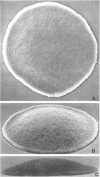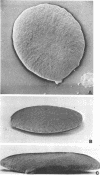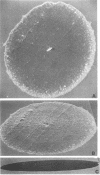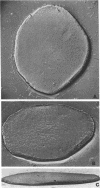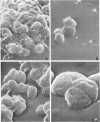Abstract
Morphological studies utilizing various microscopy techniques have aided in our understanding of the gonococcus and gonorrhea. In this study scanning electron microscopy was used to study differences in virulent (colony types 1 and 2) and avirulent (colony types 3 and 4) gonococci relative to colony appearance, patterns of growth in liquid media, and surface features of individual cocci. Colony types of virulent gonococci are smaller in diameter but have a higher evaluation than those of avirulent mutants. Colony type 2 has a convex undersurface that is associated with surface pitting of solid media. When the colonies are grown in liquid media, various degrees of autoagglutination are observed; this is most pronounced with type 2 and least evident with type 4. Although pili may be involved in this phenomena, other mechanisms must be employed, since type 3 gonococci that lack pili autoagglutinate. Pili are seen on types 1 and 2 and are absent from types 3 and 4. They appear as individual threads radiating from the bacteria or as bundles of pili attaching adjacent cocci. Another extracellular structure consists of small spherical bodies that can coat the bacteria surface, attach to pili, or exist free from other bacterial components. These spheres are least evident with type 4. The gonococcal surface is pebbly with multiple sulci.
Full text
PDF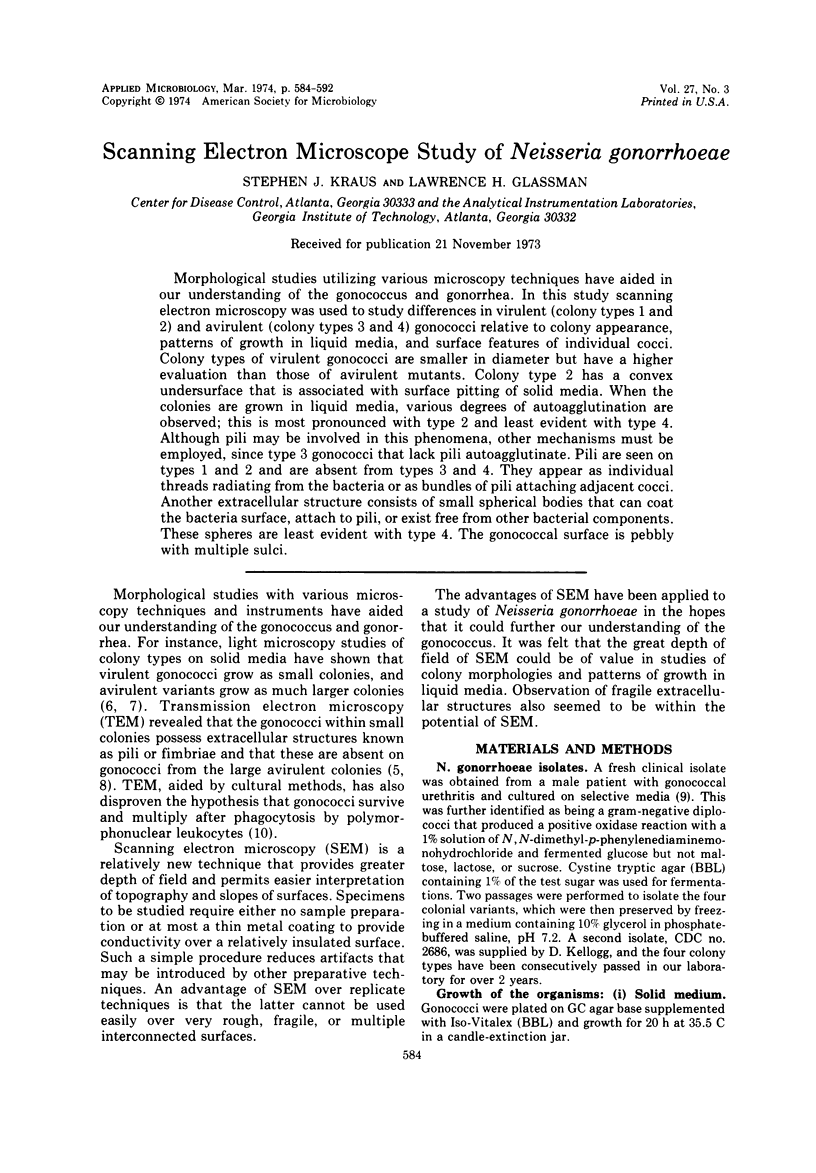
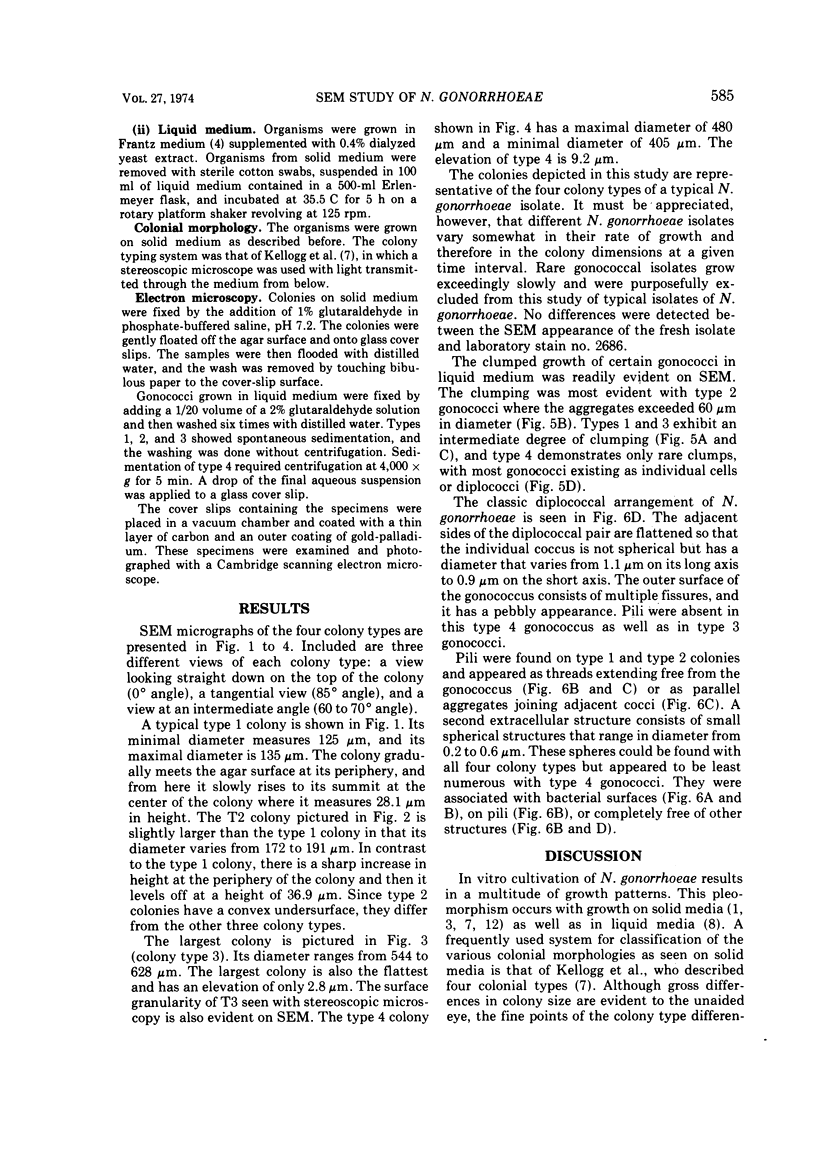
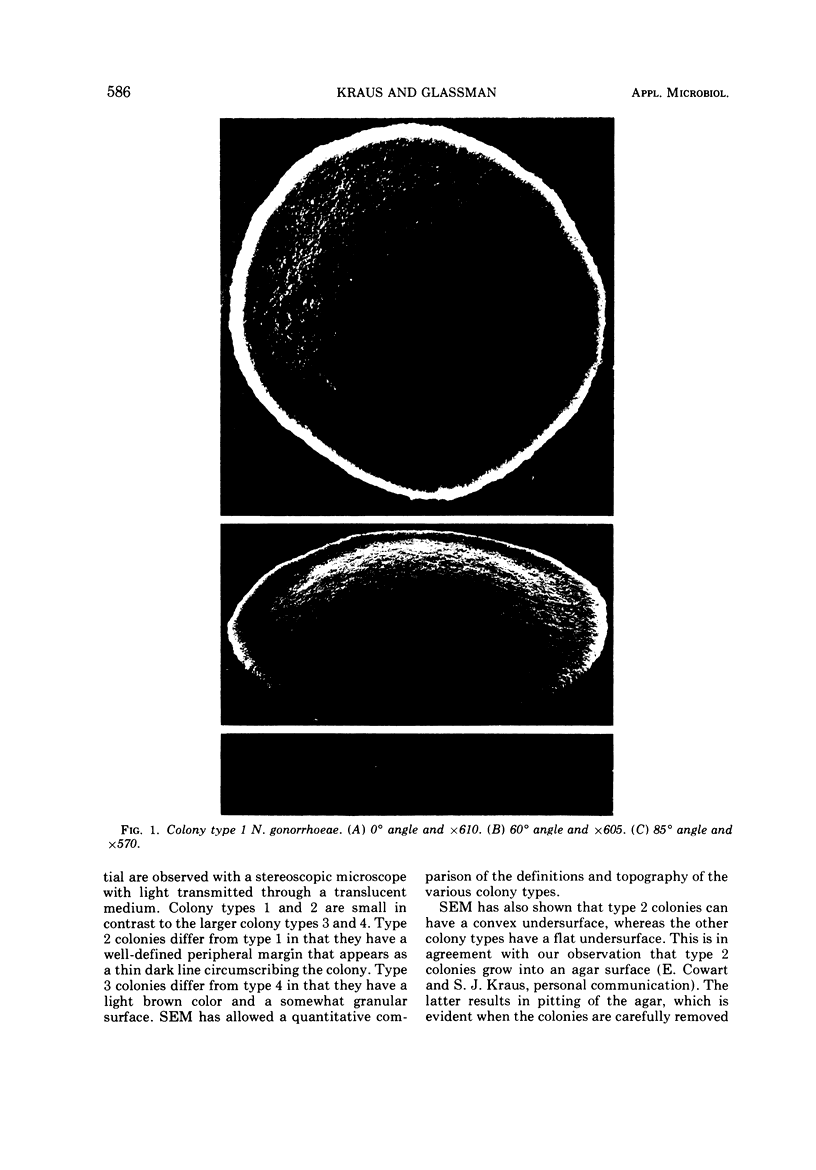
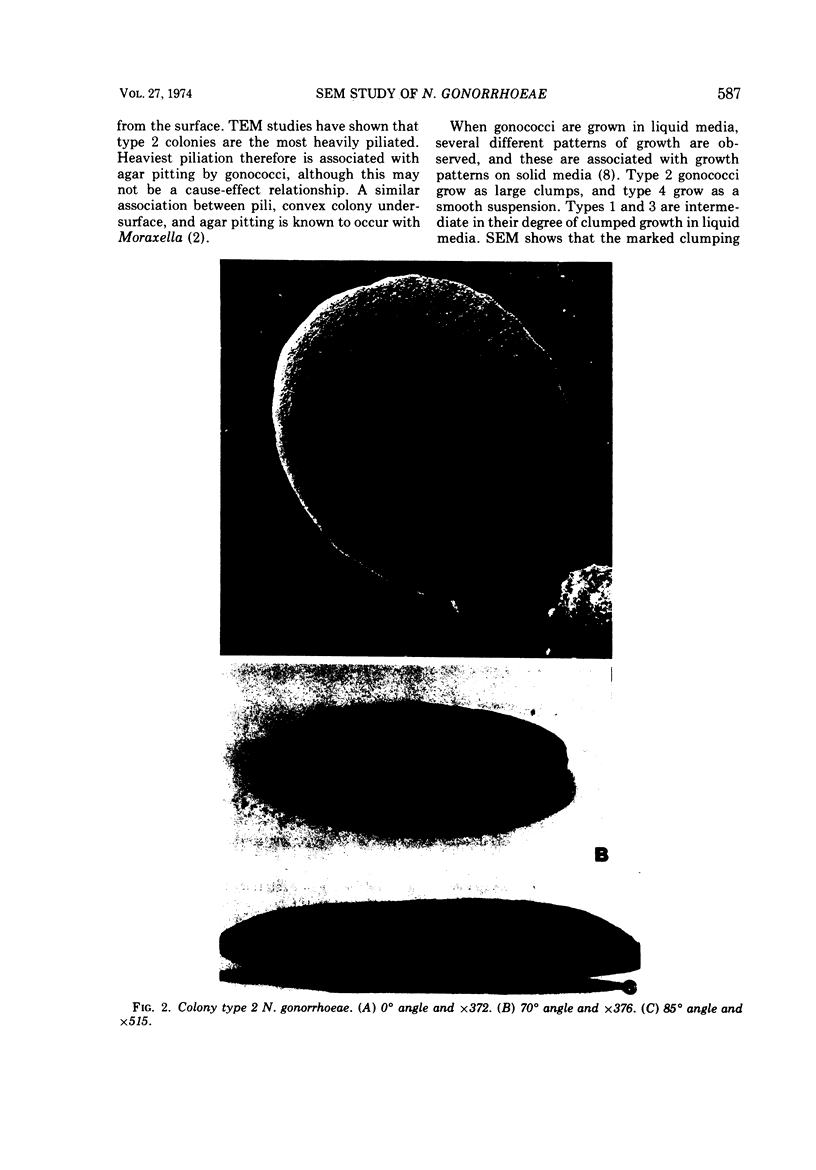
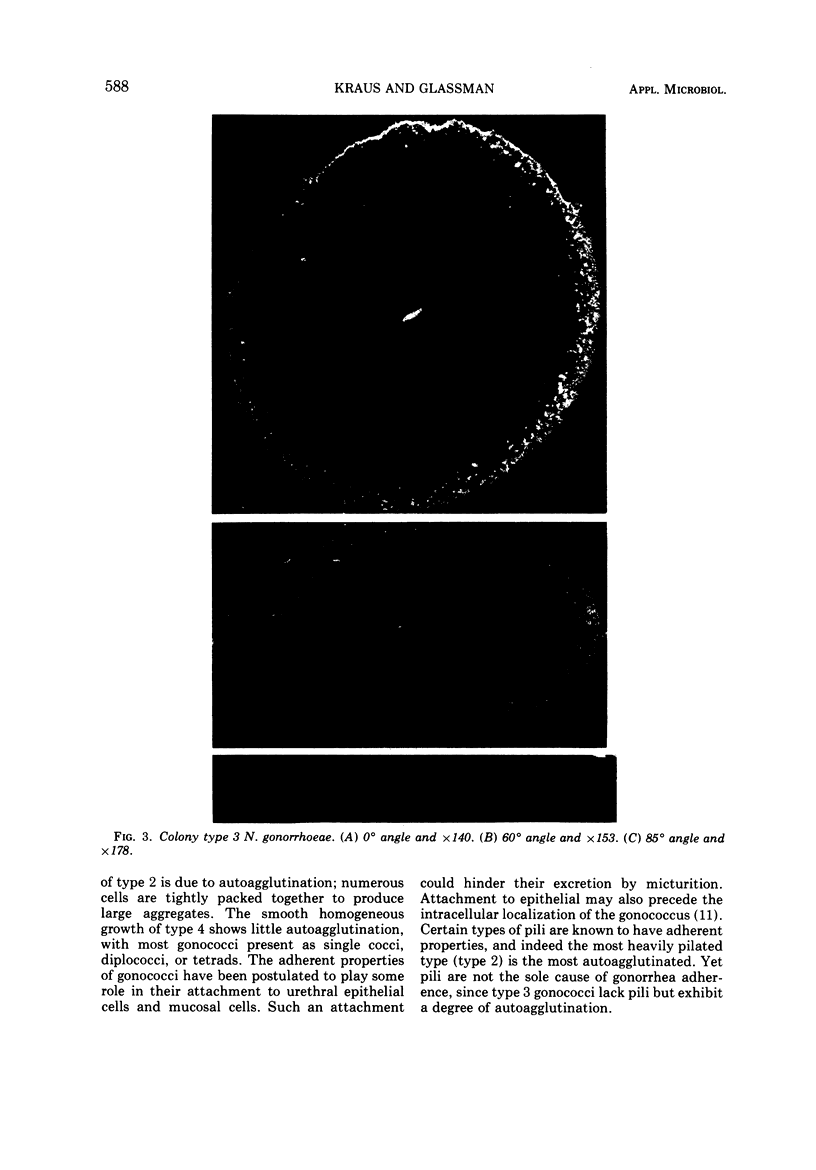
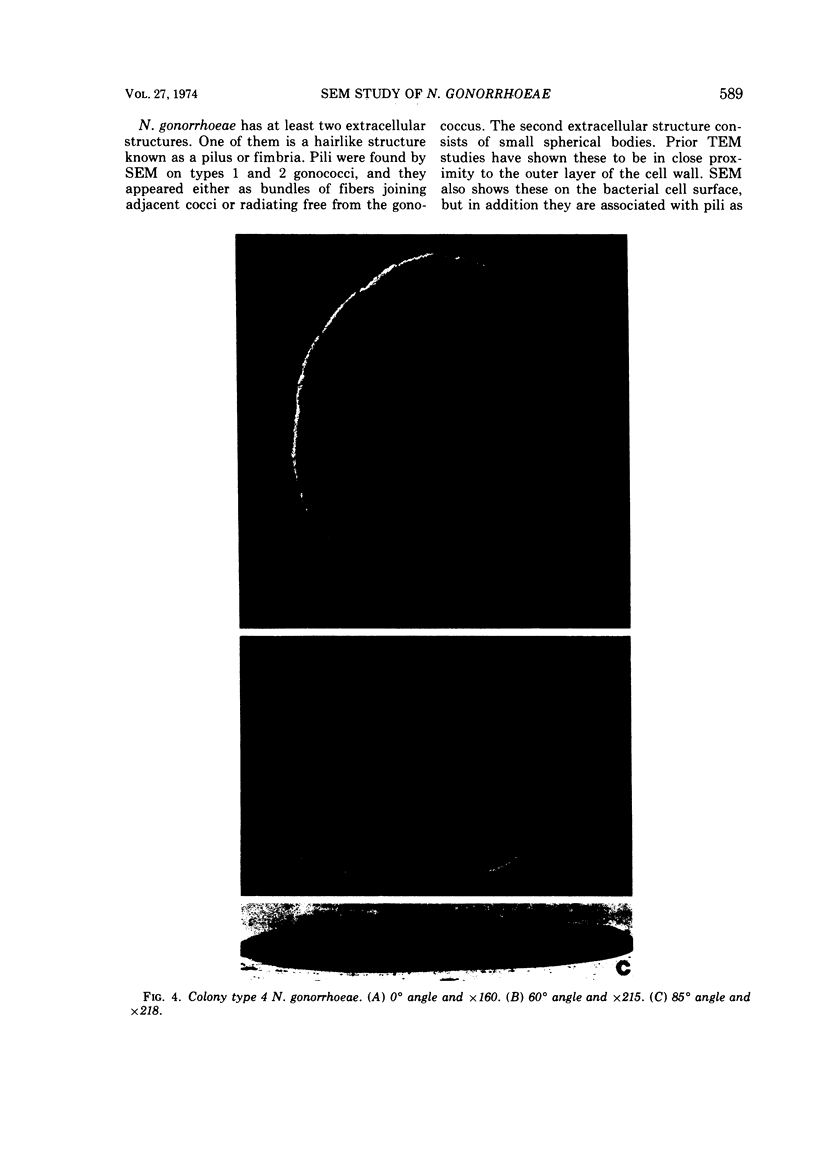
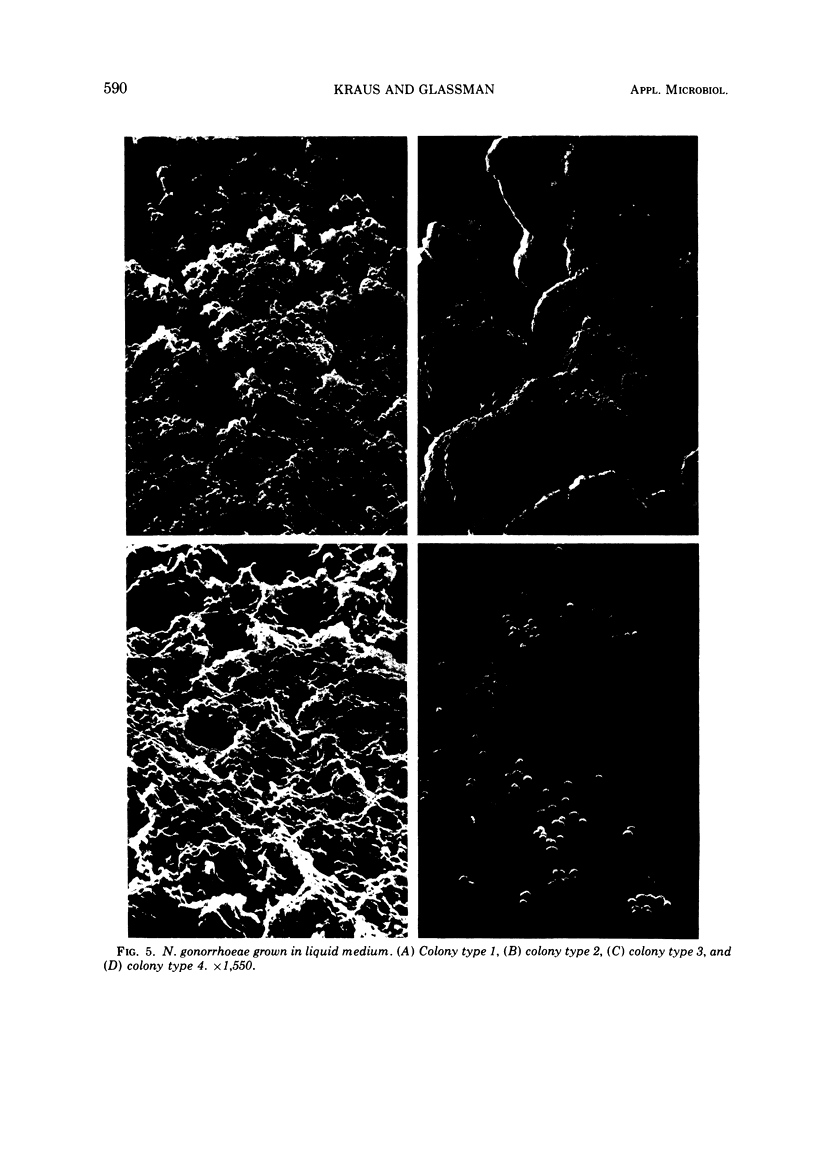
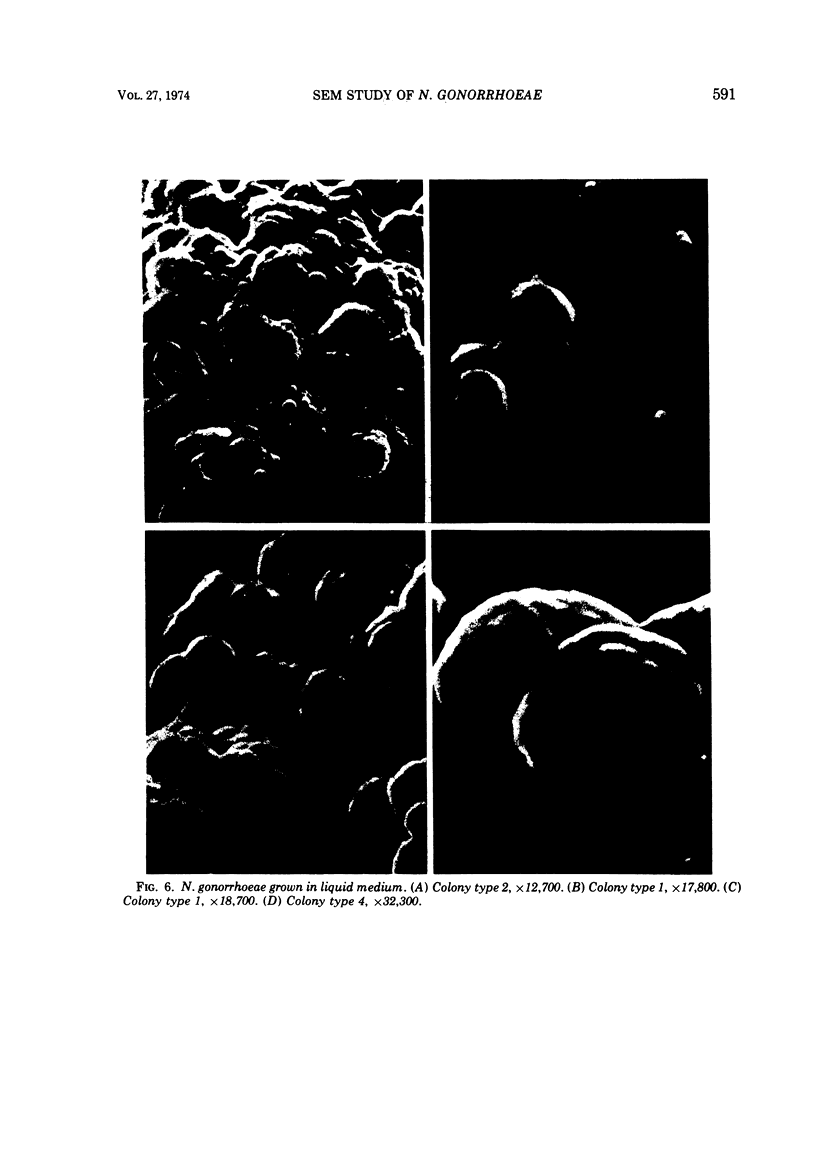
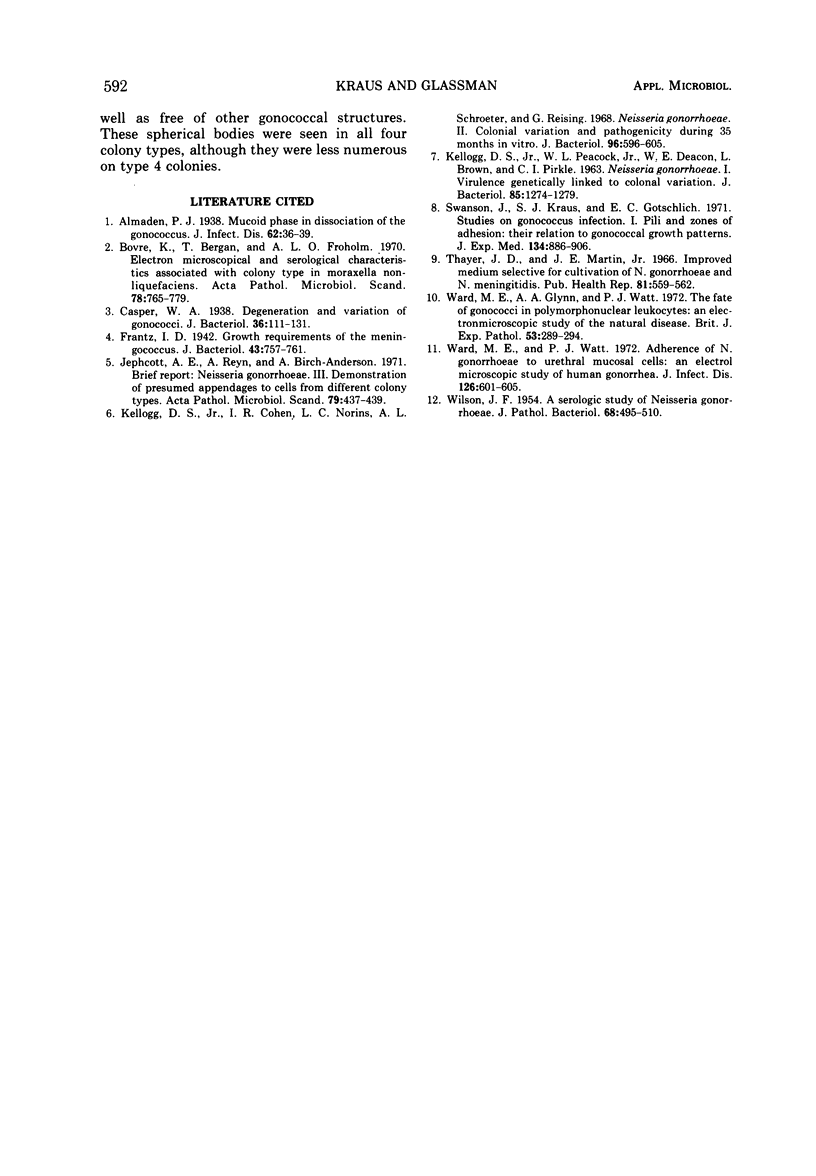
Images in this article
Selected References
These references are in PubMed. This may not be the complete list of references from this article.
- Bovre K., Bergan T., Froholm L. O. Electron microscopical and serological characteristics associated with colony type in Moraxella nonliquefaciens. Acta Pathol Microbiol Scand B Microbiol Immunol. 1970;78(6):765–779. doi: 10.1111/j.1699-0463.1970.tb04368.x. [DOI] [PubMed] [Google Scholar]
- Casper W. A. Degeneration and Variation of Gonococci. J Bacteriol. 1938 Aug;36(2):111–131. doi: 10.1128/jb.36.2.111-131.1938. [DOI] [PMC free article] [PubMed] [Google Scholar]
- Frantz I. D. Growth Requirements of the Meningococcus. J Bacteriol. 1942 Jun;43(6):757–761. doi: 10.1128/jb.43.6.757-761.1942. [DOI] [PMC free article] [PubMed] [Google Scholar]
- Jephcott A. E., Reyn A., Birch-Andersen A. Neisseria gonorrhoeae 3. Demonstration of presumed appendages to cells from different colony types. Acta Pathol Microbiol Scand B Microbiol Immunol. 1971;79(3):437–439. doi: 10.1111/j.1699-0463.1971.tb00086.x. [DOI] [PubMed] [Google Scholar]
- KELLOGG D. S., Jr, PEACOCK W. L., Jr, DEACON W. E., BROWN L., PIRKLE D. I. NEISSERIA GONORRHOEAE. I. VIRULENCE GENETICALLY LINKED TO CLONAL VARIATION. J Bacteriol. 1963 Jun;85:1274–1279. doi: 10.1128/jb.85.6.1274-1279.1963. [DOI] [PMC free article] [PubMed] [Google Scholar]
- Kellogg D. S., Jr, Cohen I. R., Norins L. C., Schroeter A. L., Reising G. Neisseria gonorrhoeae. II. Colonial variation and pathogenicity during 35 months in vitro. J Bacteriol. 1968 Sep;96(3):596–605. doi: 10.1128/jb.96.3.596-605.1968. [DOI] [PMC free article] [PubMed] [Google Scholar]
- Swanson J., Kraus S. J., Gotschlich E. C. Studies on gonococcus infection. I. Pili and zones of adhesion: their relation to gonococcal growth patterns. J Exp Med. 1971 Oct 1;134(4):886–906. doi: 10.1084/jem.134.4.886. [DOI] [PMC free article] [PubMed] [Google Scholar]
- Thayer J. D., Martin J. E., Jr Improved medium selective for cultivation of N. gonorrhoeae and N. meningitidis. Public Health Rep. 1966 Jun;81(6):559–562. [PMC free article] [PubMed] [Google Scholar]
- WILSON J. F. A serological study of Neisseria gonorrhoeae. J Pathol Bacteriol. 1954 Oct;68(2):495–510. doi: 10.1002/path.1700680222. [DOI] [PubMed] [Google Scholar]
- Ward M. E., Glynn A. A., Watt P. J. The fate of gonococci in polymorphonuclear leucocytes: an electron microscopic study of the natural disease. Br J Exp Pathol. 1972 Jun;53(3):289–294. [PMC free article] [PubMed] [Google Scholar]
- Ward M. E., Watt P. J. Adherence of Neisseria gonorrhoeae to urethral mucosal cells: an electron-microscopic study of human gonorrhea. J Infect Dis. 1972 Dec;126(6):601–605. doi: 10.1093/infdis/126.6.601. [DOI] [PubMed] [Google Scholar]



